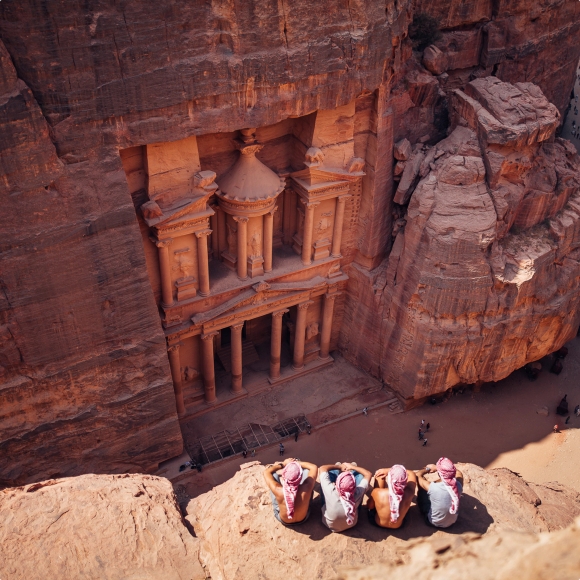
Petra
Situated between the Red Sea and the Dead Sea and inhabited since prehistoric times, the rock-cut capital city of the Nabateans, became during Hellenistic and Roman times a major caravan centre for the incense of Arabia, the silks of China and the spices of India, a crossroads between Arabia, Egypt and Syria-Phoenicia. Petra is half-built, half-carved into the rock, and is surrounded by mountains riddled with passages and gorges. An ingenious water management system allowed extensive settlement of an essentially arid area during the Nabataean, Roman and Byzantine periods. It is one of the world's richest and largest archaeological sites set in a dominating red sandstone landscape.
UNESCO CULTURAL HERITAGEWadi Rum
Wadi Rum Protected Area (WRPA) is located in the southern part of Jordan, east of the Rift Valley and south of the steep escarpment of the central Jordanian plateau. It comprises an area of 74,200 hectares. WRPA's natural values include desert landforms developed within continental sandstones. These landforms have been developed under the influence of a combination of various controlling factors, such as lithology, tectonic activities (including rapid uplift, numerous faults and joints) and surface processes (including various types of weathering and erosion associated with desert climate as well as humid climates in the past), representing million years of ongoing landscape evolution.
UNESCO MIXED NATURAL AND CULTURAL SITE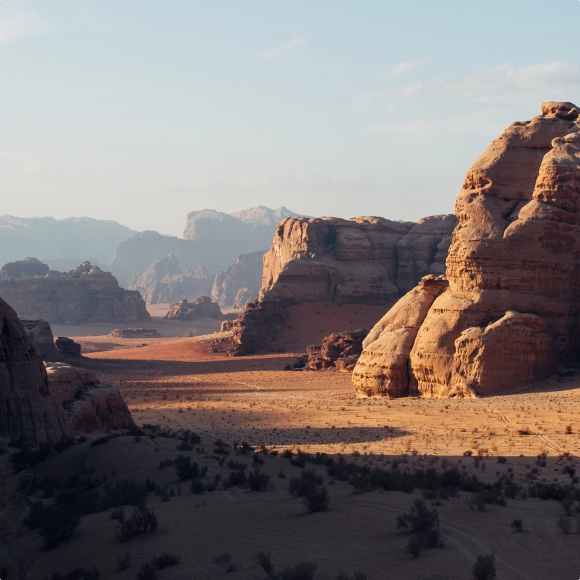

As-Salt
Built on three closely-spaced hills in the Balqa highland of west-central Jordan, the city of As-Salt, was an important trading link between the eastern desert and the west. During the last 60 years of the Ottoman period, the region prospered from the arrival and settlement of merchants from Nablus, Syria, and Lebanon who made their fortunes in trade, banking, and farming. This prosperity attracted skilled craftsmen from different parts of the region who worked on transforming the modest rural settlement into a thriving town with a distinctive layout and an architecture characterized by large public buildings and family residences constructed of local yellow limestone.
UNESCO CULTURAL HERITAGEQuseir Amra
Built in the early 8th century beside the Wadi Butum, a seasonal watercourse, this desert establishment was both a fortress with a garrison and a residence/pleasure palace of the Umayyad caliphate. The exceptionally well-preserved, small pleasure palace comprises a reception hall and hammam (a bath complex with changing room, warm and hot rooms), all richly decorated with figurative murals that reflect the secular art of the time. The extensive fresco paintings of the bath building and reception hall are unique for Islamic architecture of the Umayyad period. The wall paintings show influences from classical pagan themes, Byzantine style portraits and hunting scenes, depictions of animals and birds, and are accompanied by inscriptions...
UNESCO CULTURAL HERITAGE
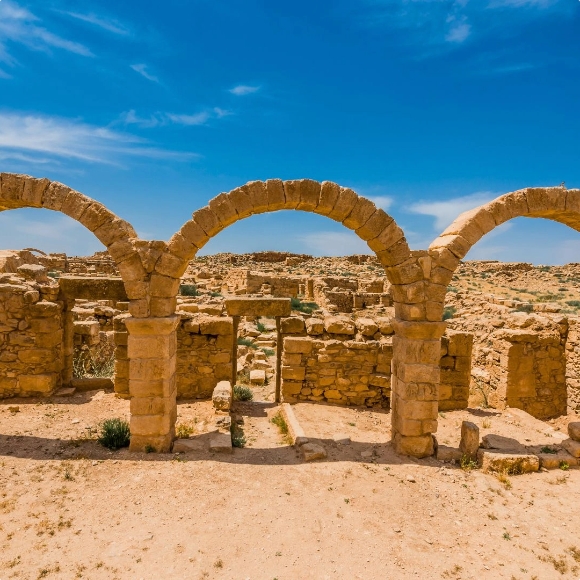
Um er-Rasas
Most of this archaeological site, which started as a Roman military camp and grew to become a town from the 5th century, has not been excavated. It contains remains from the Roman, Byzantine and Early Muslim periods (end of 3rd to 9th centuries AD) and a fortified Roman military camp. The site also has 16 churches, some with well-preserved mosaic floors. Particularly noteworthy is the mosaic floor of the Church of Saint Stephen with its representation of towns in the region. Two square towers are probably the only remains of the practice, well known in this part of the world, of the stylites (ascetic monks who spent time in isolation atop a column or tower). Um er-Rasas is surrounded by, and dotted with, remains of ancient agricultural cultivation in an arid area.
UNESCO CULTURAL HERITAGEUmm al-Jimal
The World Heritage Organization (UNESCO) announced in 2024 the inclusion of Umm El Jimal as the seventh Jordanian site on the UNESCO World Heritage List. Rising out of Jordan's northern basalt plain, beautiful Umm El Jimal is both a modern town and an ancient archaeological site, home to almost 2000 years of fascinating history and culture - Nabataean, Roman, Byzantine, Umayyad, Mamluk, Ottoman and Modern. It was a thriving agricultural center and a stop on the Hijaz to Damascus caravan route. One can explore over 150 well preserved ancient structures, built in neighborhoods along meandering alleys and around hosh-like plazas.
UNESCO CULTURAL HERITAGE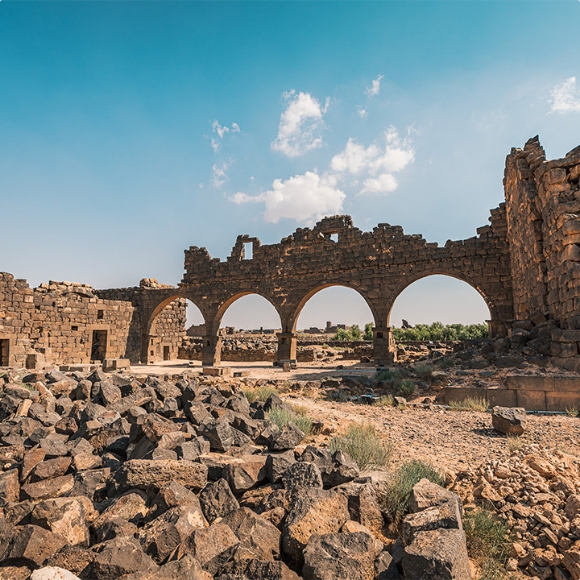
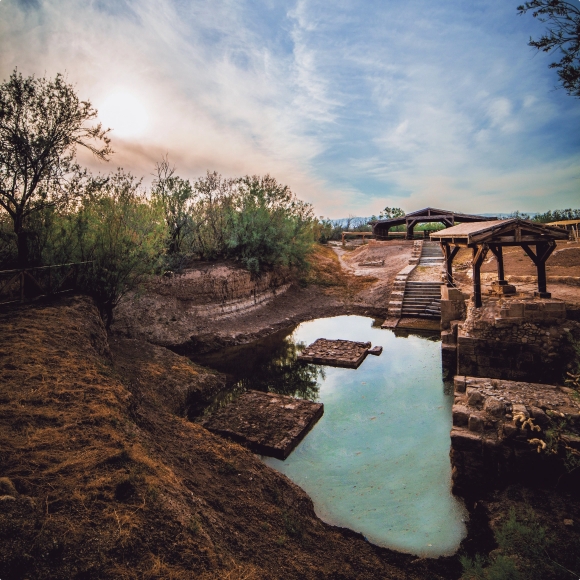
Baptism Site
Situated on the eastern bank of the River Jordan, nine kilometres north of the Dead Sea, the archaeological site consists of two distinct areas: Tell Al-Kharrar, also known as Jabal Mar-Elias (Elijah's Hill) and the area of the churches of Saint John the Baptist near the river. Situated in a pristine natural environment the site is believed to be the location where Jesus of Nazareth was baptized by John the Baptist. It features Roman and Byzantine remains including churches and chapels, a monastery, caves that have been used by hermits and pools in which baptisms were celebrated, testifying to the religious character of the place. The site is a Christian place of pilgrimage.
UNESCO CULTURAL HERITAGEMansaf
Mansaf is a classic Jordanian Bedouin dish featuring tender pieces of lamb, fluffy rice, and a tangy-jameed-based yogurt sauce, all on top of a thin Middle Eastern flatbread known as Shrak. In my family, this Jordanian Mansaf recipe is number one. We crave it all year round, and it is the most requested dish we ask our mom to make. My mother was raised in Jordan, where she was taught this dish in her later years by her mother. She has passed down that recipe to me; frankly, I never tasted a better version. Mansaf is a dish many make for large gatherings, whether hosting friends for dinner, feeding attendees at a funeral, or for celebratory occasions like a wedding. It consists of several key components.
INTANGIBLE CULTURAL HERITAGE OF HUMANITY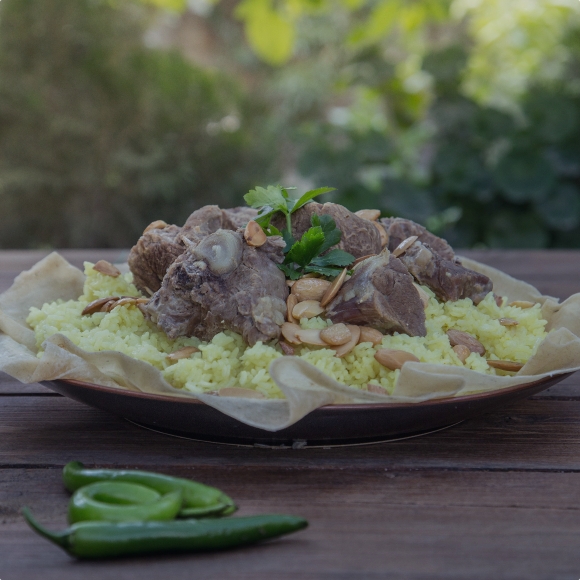

As-Samer
Practised across many areas of Jordan, As-Samer consists mainly of dancing and singing and is performed on various occasions, most commonly during marriage ceremonies. Practitioners range from young to older individuals, with children being encouraged to take part during performances. On the wedding day, the father of the groom instructs the attendees to line up and start applauding and singing. The performance that follows involves specific roles for certain people. The Al-Hashi is a veiled woman, always one of the inviters' relatives, who sings and dances in front of the Al-Samer row while wearing an Abaya (a loose, black garment worn over the traditional garment).
INTANGIBLE CULTURAL HERITAGE OF HUMANITY
